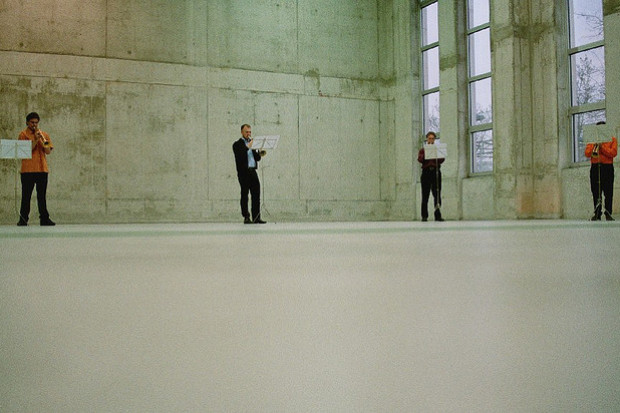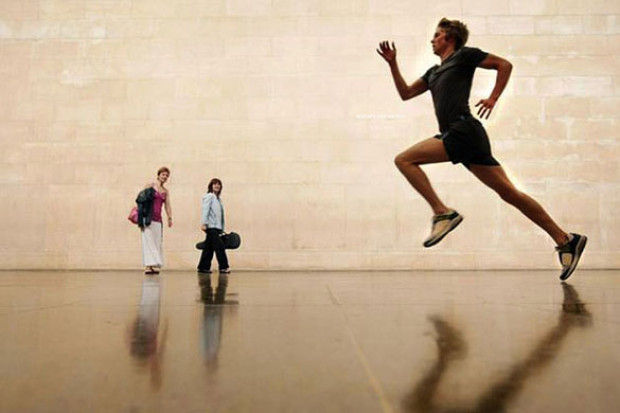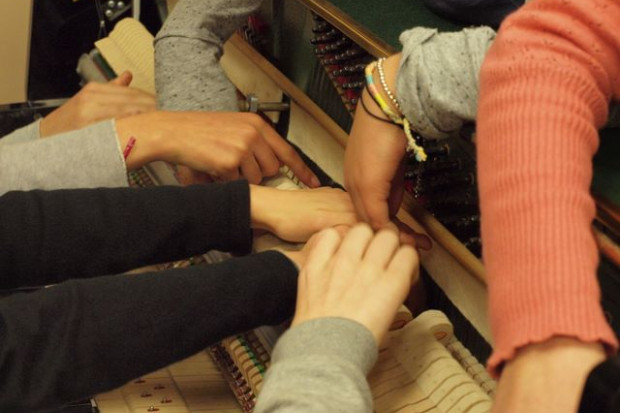Tête à Tête Opera Festival
Tête à Tête’s Opera Festival is a three-week-long series of concerts made up of, in the organiser’s own words, ‘twenty-first century drama and storytelling driven by music and the voice.’ There is a refreshingly loose, almost laboratorial feel to the proceedings. The festival features an eclectic programme of chamber pieces, guerrilla theatres, works-in-progress and many other styles besides. The self-proclaimed aim is to give opera ‘a kick up the aria’.
Nicholas Brown’s As I Now Have Memoyre was presented on two separate nights as part of this year’s festival. The piece could not truly be counted as operatic in the repertorial, canonical sense of the term; its do-it-yourself, politicised intermedia style suggests the music-driven avant-garde theatres of Fluxus as opposed to any idea of opera as such. As I Now Have Memoyre featured Linda Hirst (in full Rococo dress) and Natasha Lohan in the two most prominent musical roles, nominally with the latter as singer and the former her teacher. In addition to the singers, an indeterminate number of performers fussed about, two or three of them diligently and without irony playing out the roles of porter and floor manager. The audience was encouraged to move around the spectacle, forming its grammar themselves. As is common in Brown’s work, the common divisions between composer, performer and audience were usurped throughout.
Hirst and Lohan sat, quietly decoding hieratic shards of notation with magnifying glasses and voices, before a climactic nonsense dual sent the teacher into the dressing room for a private performance that was relayed to the main space via a video link. A musical backing track played throughout. This moved through processed tones and drones; a section of peaceful, belling pianos and chirping recorded birds; the singers’ roles next became more prominent amidst churning harsh noise; and finally the tranquil pianos returned.
The set was constructed over the course of the performance: the roaming audience’s attention was guided this way and that by the hanging of a curtain to define a new performance space, or by the writing of texts onto extended perspex sheets. Those texts enigmatically directed the audience to some sort of interpretative stance for the event itself: ‘After all, art should not be slighted simply because it works by imitating natural things.’ It seems to me that this extracted statement reveals the core of the piece. As I Now Have Memoyre consecrates the creed of Scottish artist Martin (Creed) that ‘the whole world plus the work equals the whole world’, a statement that acts as an intervention into everyday life just as it seeks to underline the everydayness of that action. The exchange between performer and audience in As I Now Have Memoyre apostrophises the movement enacted in Creed’s epigram. The indeterminate body of performers suggests rules of action just as it encourages their contravention. Social conventions are revealed tellingly throughout; the willingness of individuals to become subsumed in group movement, the obsessive surveillance of one by the other and the fixed expectations we have of ‘performances’ and ‘performers’ – all these were probed in the course of the doing of the work, a doing that drew in the audience as much as it did the performers.
Brown’s approach was not new but it worked: the piece’s non-interventionist style and freely-defined boundaries were maintained right up until the confusing end-movement. Its aesthetics thereby saturated the whole, and the urge to define in more concrete terms what had gone before was shunned to the end.
Published on 1 October 2009
Stephen Graham is a lecturer in music at Goldsmiths, University of London. He blogs at www.robotsdancingalone.wordpress.com.












